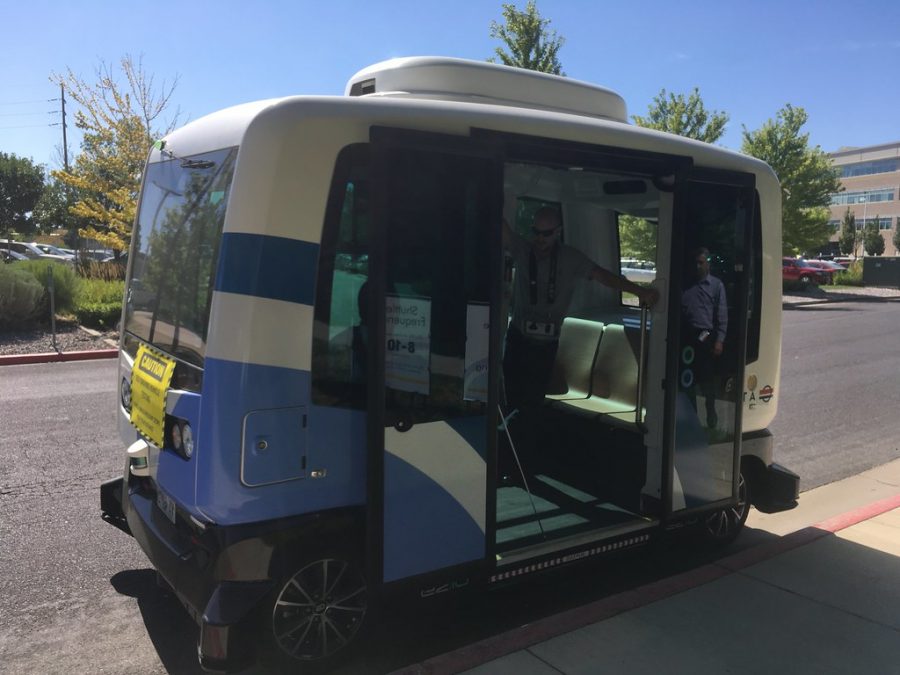Relay: Virginia’s First Autonomous Shuttle
The Mosaic District is a modern development in Fairfax County, Virginia consisting of businesses and condos. It is a popular place to go out to eat or for friends to hang out. Unfortunately, like many places in America, it is almost impossible to access without a car. Fairfax County decided to combine an attempt at providing transit to the Mosaic District with an experimental driverless shuttle. The result of this idea and several years of design and research was one small blue bus called Relay, though it is very small and can only hold three people so it can hardly be considered a bus. It entered service a few months ago. Aside from connecting the Mosaic District with a nearby Metrorail station, it requires no driver and is considered to be one of the best autonomous shuttles of its time.
Clearly, the goal of this project was more to design an autonomous shuttle than to provide good transit to the Mosaic District, and that is very clear when looking deeper into the project. Running every 20 minutes on weekdays (except Fridays) at a maximum speed of 12.5 miles per hour only during daylight hours, there are few who would actually be able to use Relay to get around, especially considering that Friday-Sunday is the time when most people visit the Mosaic District and is also exactly when there is no shuttle service. It does have some perks for those who actually use it though: it is free, it is wheelchair accessible, and it has a tracker that shows the live location of Relay. Under normal circumstances Relay could transport 12 passengers, but currently the capacity is limited to three in order to allow for proper social distancing. Aside from these passengers, there is one so called ‘safety steward’ on board Relay at all times to ensure there are no problems with the autonomous technology. The safety steward can take over the operation of Relay if needed. The technology that Relay uses is very advanced, though; various sensors all around the vehicle can map out its surroundings, and combined with the pre-programmed route, Relay is thought to be as safe as autonomous vehicles can possibly get using current technology. To further ensure the safety of Relay’s passengers and surroundings, it is currently limited to a maximum speed of 12.5 miles per hour, though that speed may go up in the future.
So, is Relay the answer to providing public transit in the Mosaic District? No. But that was not the main goal of the project, and the autonomous technology Relay uses seems to be a big success so far, and that was the true goal of the project. Autonomous technology clearly has a long way to go before it can dominate vehicles on the road, but this project proves that on a small scale and at low speeds, operating a vehicle with no human operate is an achievable task. Being Virginia’s first shuttle of its kind, the Relay project truly was a success.
Related stories:
http://www.tysonsreporter.com/2020/10/23/first-passengers-board-autonomous-shuttle-in-merrifield/
https://www.fairfaxcounty.gov/transportation/autonomous-shuttle-pilot
https://patch.com/virginia/vienna/driverless-shuttle-starts-passenger-service-mosaic-district
https://www.wellsandassociates.com/blog/relay-autonomous-shuttle/















